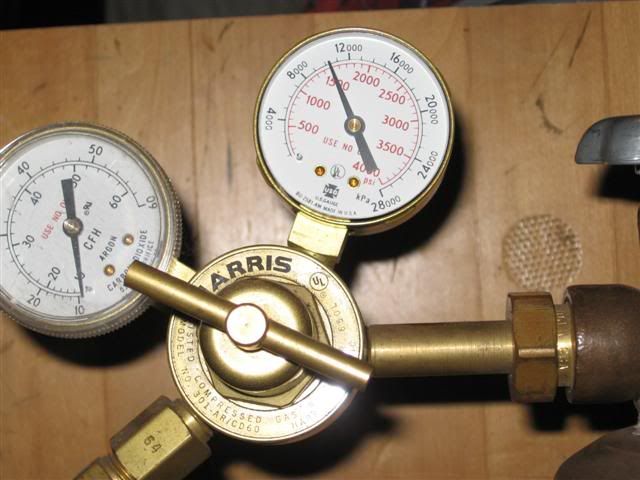Disaster Area
Cast Iron
- Joined
- May 6, 2005
When i recently refilled an 80 cubic foot bottle with argon-25 (argon-co2 mix), i noted that the pressure (on the full bottle) was 1500psi. I had thought a full bottle would read 2000 psi. My conclusion is either:
a. regulator is damaged. regulator is harris, 10 years old. Is it common to have these service every 10 years (with little use)? How do i determine if regulator is damaged?
b. temperature has affected reading on tank. ambient air temperature is 70 degrees f.
c. distributor filled 75% of tanks capacity, i.e. 60 cubic feet (& charged me for 80 cf).
should i bring a regulator when i refill, to check tanks capacity before i leave distributor?
TIA
regards.
this is the newly filled tanks regulator w/guage:

this should be 2000 psi on a full tank?
a. regulator is damaged. regulator is harris, 10 years old. Is it common to have these service every 10 years (with little use)? How do i determine if regulator is damaged?
b. temperature has affected reading on tank. ambient air temperature is 70 degrees f.
c. distributor filled 75% of tanks capacity, i.e. 60 cubic feet (& charged me for 80 cf).
should i bring a regulator when i refill, to check tanks capacity before i leave distributor?
TIA
regards.
this is the newly filled tanks regulator w/guage:

this should be 2000 psi on a full tank?


